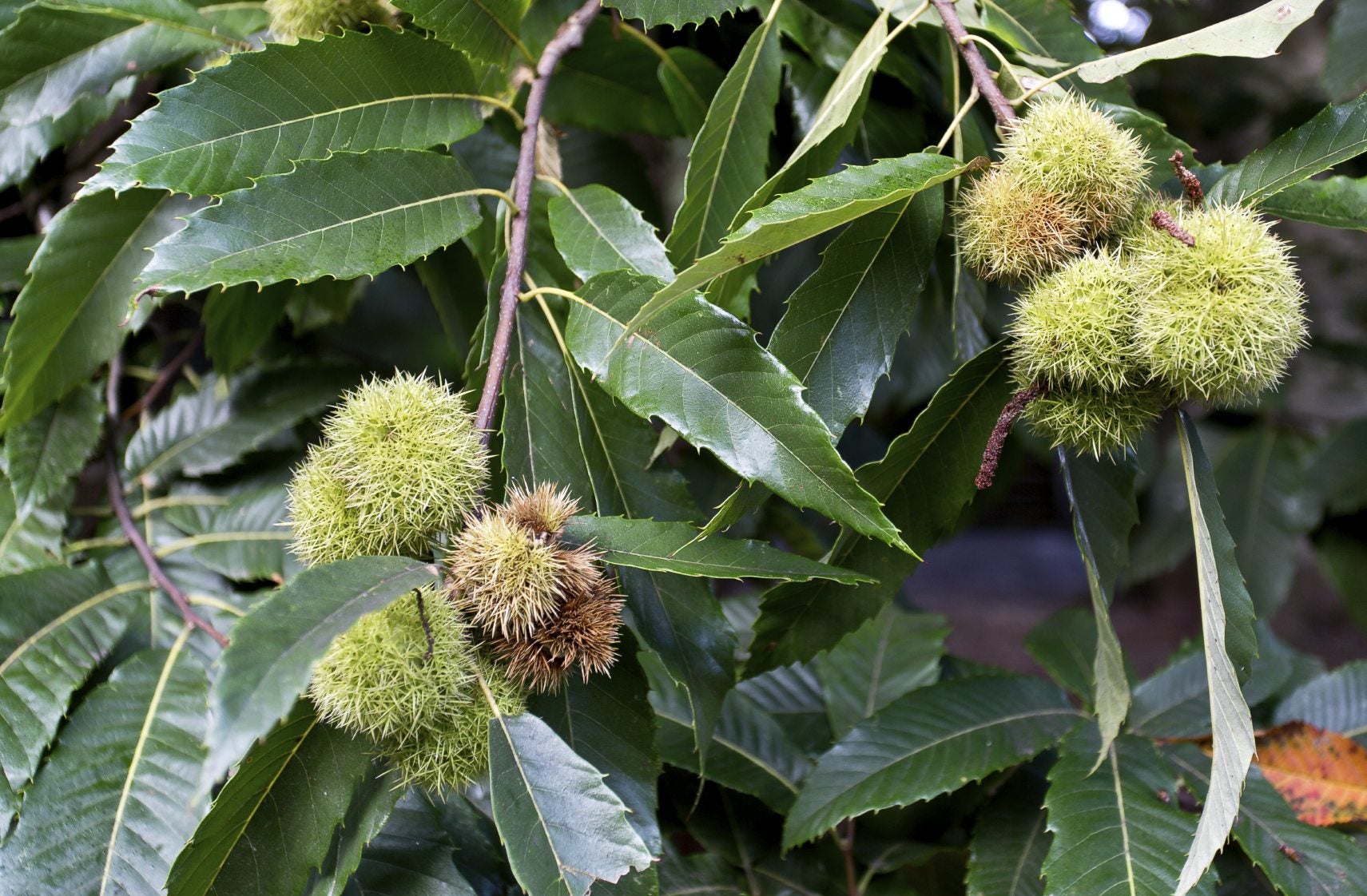The Chestnut Tree: A Majestic Symbol of Autumn
The chestnut tree, a towering and iconic member of the Fagaceae family, has captivated human imagination for centuries. With its distinctive, spiny burrs, glossy leaves, and delicious nuts, it has become a symbol of autumn and a beloved fixture in many landscapes. This article will delve into the fascinating world of the chestnut tree, exploring its history, characteristics, cultural significance, and ecological importance.
A Brief History of the Chestnut Tree
The chestnut tree’s origins can be traced back to ancient Greece and Rome, where it was highly prized for its timber, nuts, and medicinal properties. The Romans were particularly fond of the chestnut and introduced it to various parts of Europe, including Britain. Over time, chestnut trees spread to other regions of the world, including North America, where they became naturalized in many areas.

One of the most significant events in the history of the chestnut tree was the American chestnut blight, a fungal disease that devastated chestnut forests in the eastern United States during the early 20th century. This devastating blight caused the near extinction of the American chestnut, leading to significant ecological and economic consequences. However, ongoing efforts to restore the American chestnut are showing promise, with scientists working to develop blight-resistant varieties.
Characteristics of the Chestnut Tree
Chestnut trees are known for their impressive size and longevity. They can grow to be over 100 feet tall and have a lifespan of several hundred years. The trees have a broad, spreading crown and a deep taproot system, which helps them to anchor themselves firmly in the ground. The bark is typically dark brown and deeply furrowed, while the leaves are large, oval-shaped, and have serrated edges.
One of the most distinctive features of the chestnut tree is its spiny burrs, which contain the edible nuts. The burrs are green when young and become brown and dry as they mature. Inside the burrs, there are usually two or three nuts, which are encased in a hard, shiny shell. Chestnut nuts are a rich source of carbohydrates, protein, and minerals, and they have a sweet, nutty flavor.
Cultural Significance of the Chestnut Tree

The chestnut tree has played a significant role in the culture and folklore of many societies. In ancient Greece, the chestnut was associated with Zeus, the king of the gods, and it was often used in religious ceremonies. In Roman mythology, the chestnut tree was sacred to Jupiter, the equivalent of Zeus.
In European folklore, the chestnut tree was believed to have healing properties, and it was often used to ward off evil spirits. The chestnut was also considered a symbol of fertility and longevity. In North America, the American chestnut was an important food source for Native Americans, who used the nuts to make a variety of dishes.
Ecological Importance of the Chestnut Tree
Chestnut trees play a vital role in the ecosystem. They provide food and habitat for a variety of wildlife, including squirrels, deer, and birds. The trees also help to improve soil quality and prevent erosion.
The loss of the American chestnut due to blight had a devastating impact on the eastern deciduous forests of the United States. The absence of the chestnut created a significant gap in the forest canopy, allowing other tree species to become more dominant. This, in turn, led to changes in the forest floor vegetation and wildlife communities.
The Future of the Chestnut Tree

Despite the challenges faced by the American chestnut, there is hope for the future of this iconic tree. Scientists are working to develop blight-resistant varieties through genetic engineering and other methods. These efforts are showing promise, and it is possible that the American chestnut will one day be restored to its former glory.
In addition to the ongoing efforts to restore the American chestnut, there is also a growing interest in preserving and promoting other chestnut species. The European chestnut, for example, is a valuable timber and nut tree that continues to be cultivated in many parts of the world.
The chestnut tree is a majestic and versatile species that has captured the human imagination for centuries. From its ancient history to its cultural significance and ecological importance, the chestnut tree continues to inspire awe and wonder. As efforts to restore and protect this iconic tree continue, we can look forward to a future where the chestnut tree remains a cherished part of our natural heritage.

:strip_icc()/Star-Jasmine-Bb09HQPpasXBPjzYMW55cV-cae2b5707aa74a3ba328959ad0357284.jpg?w=200&resize=200,112&ssl=1)




